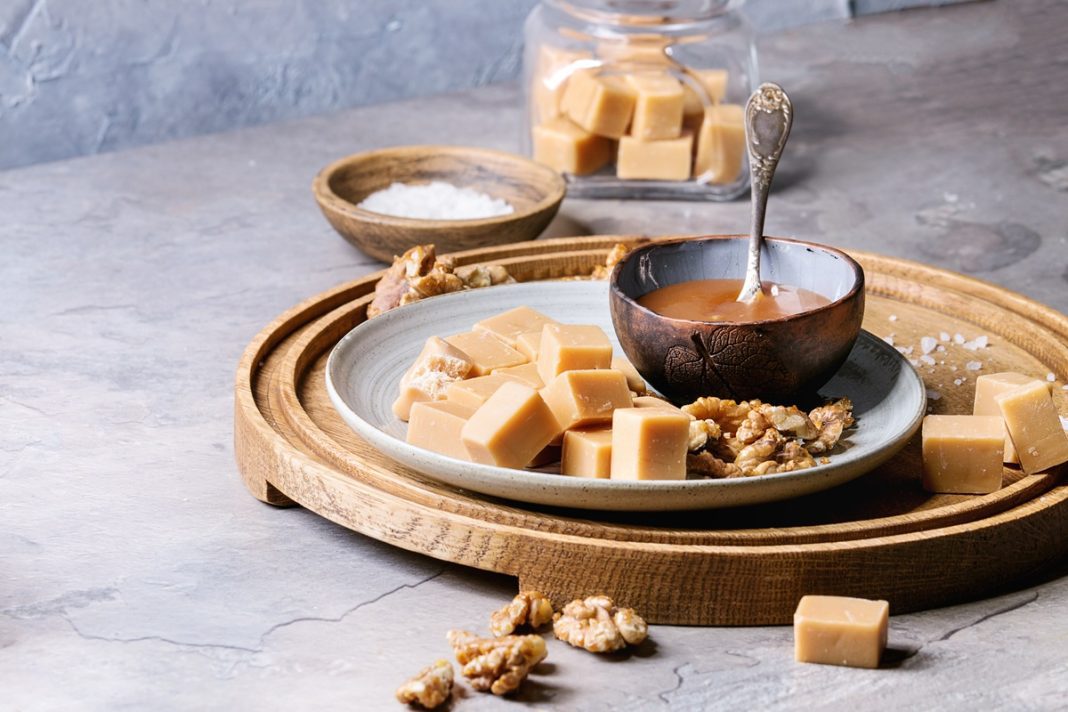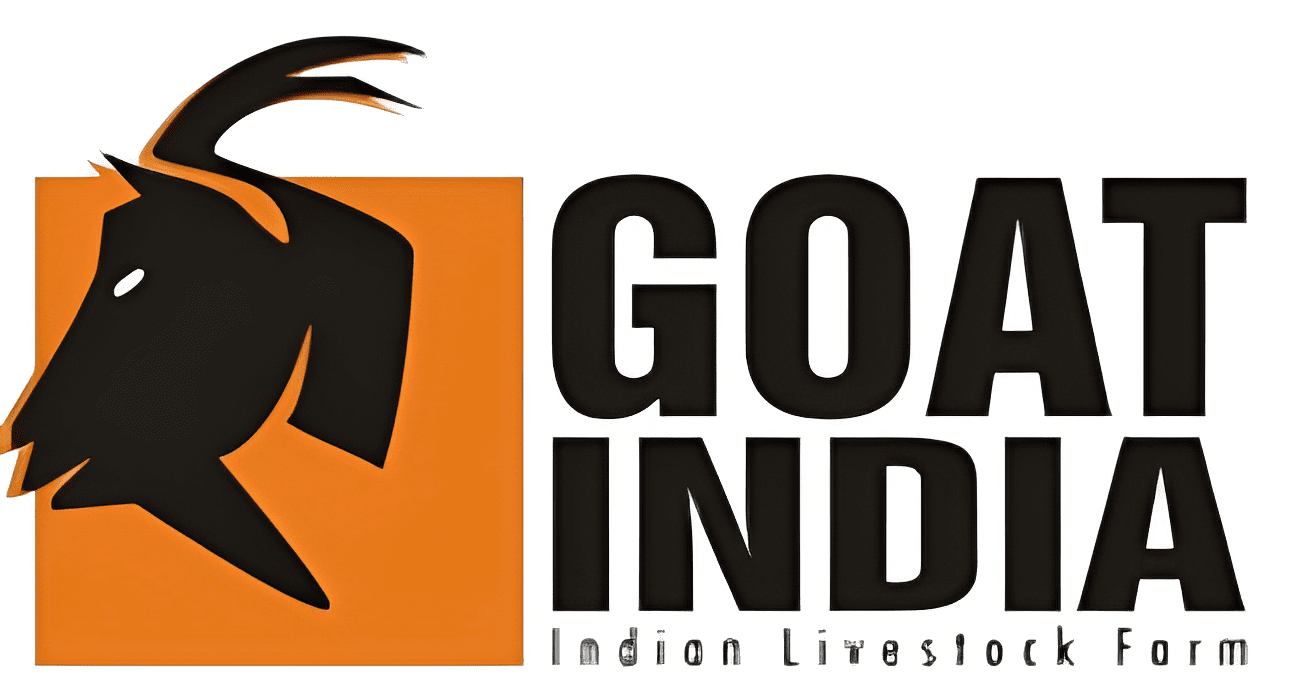
Goat Milk Caramel Production Guide
Master the art of premium dairy value addition with traditional caramel-making techniques using nutritious goat milk. Transform your dairy farming into a profitable enterprise through artisanal confectionery production.
Market Potential & Production Data
Real market insights for goat milk caramel production in India
Production Knowledge Hub
Primary Ingredients
- Fresh Goat Milk: 2.5-3 liters (high-fat content preferred)
- Sugar: 800-1000g (refined white sugar)
- Butter: 100-150g (unsalted, pure)
- Salt: 2-3g (for flavor enhancement)
Essential Equipment
- Heavy-bottomed Pan: Stainless steel, 5L capacity
- Wooden Spatula: For continuous stirring
- Thermometer: Candy thermometer (150-160°C range)
- Silicone Molds: For uniform caramel shapes
Optional Additives
- Vanilla Extract: 5ml for flavoring
- Cardamom Powder: 2-3g for Indian taste preference
- Saffron: Premium variety enhancement
- Chopped Nuts: Almonds, pistachios for texture
Storage Materials
- Parchment Paper: Food-grade wrapping
- Airtight Containers: Glass or food-grade plastic
- Wax Paper: Individual piece wrapping
- Labels: Date and ingredient marking
Preparation Phase
Heat goat milk in heavy-bottomed pan at medium temperature. Stir occasionally to prevent milk film formation. Temperature should reach 60-65°C gradually over 15-20 minutes.
Sugar Addition
Add sugar gradually while stirring continuously. Maintain temperature at 70-75°C. Complete sugar dissolution takes 10-15 minutes with proper stirring technique.
Concentration Phase
Increase heat gradually to 85-90°C. Continue stirring for 45-60 minutes until mixture reduces to one-third original volume. Consistency should coat wooden spoon.
Final Cooking
Add butter and salt. Cook at 95-100°C until mixture reaches soft-ball stage (115°C). Test by dropping small amount in cold water – should form soft ball.
Texture Standards
Properly made goat milk caramel should be smooth, glossy, and firm yet chewy. No graininess or crystallization should be present in final product.
Color Guidelines
Ideal color ranges from light golden brown to deep amber, depending on cooking time and milk quality. Avoid burning which creates bitter taste.
Safety Parameters
Final product pH should be 6.2-6.8. Moisture content below 12% ensures proper shelf life. Temperature during storage should not exceed 25°C.
Packaging Requirements
Wrap individually in parchment paper. Store in airtight containers with silica gel packets. Label with production date and ingredients list for compliance.
Cost Analysis
Production cost per kg: ₹180-220 including milk, sugar, fuel, and packaging. Selling price range: ₹450-600 depending on market positioning and quality.
Market Channels
Local sweet shops, farmers markets, organic food stores, online platforms, and direct sales. Building relationships with retailers is crucial for sustained business.
Licensing Requirements
FSSAI license mandatory for commercial production. Local municipal trade license and GST registration required for business operations in most states.
Scaling Strategies
Start with 5-10kg weekly production. Invest in commercial equipment after establishing market demand. Consider co-operative models with other goat farmers.
Step-by-Step Production Process
Milk Selection & Testing
Use fresh goat milk with 4-6% fat content. Test for acidity levels and ensure no antibiotics. Strain through fine cloth to remove any impurities before processing.
Initial Heating
Heat milk slowly to 65°C over 15 minutes. This temperature preserves nutritional value while eliminating harmful bacteria. Stir gently to prevent scalding.
Sugar Integration
Add sugar gradually while maintaining 70-75°C temperature. Complete dissolution prevents crystallization issues later. This phase typically takes 10-15 minutes.
Concentration Cooking
Increase to 85-90°C and cook for 45-60 minutes with continuous stirring. Mixture should reduce to one-third volume with proper consistency development.
Final Stage Cooking
Add butter and cook to 115°C (soft-ball stage). Test consistency by dropping small amount in cold water. Properly cooked caramel forms soft, pliable ball.
Molding & Cooling
Pour into prepared molds or cutting trays. Allow cooling at room temperature for 2-3 hours. Cut into desired shapes once partially set but still warm.
Production Comparison Guide
| Parameter | Traditional Method | Commercial Method | Recommended |
|---|---|---|---|
| Cooking Time | 2-3 hours | 1-1.5 hours | 1.5-2 hours (balanced) |
| Temperature Control | Visual assessment | Digital monitoring | Candy thermometer |
| Batch Size | 2-3 kg milk | 20-50 kg milk | 5-10 kg milk (startup) |
| Fuel Cost | ₹15-20 per kg | ₹8-12 per kg | ₹10-15 per kg |
| Quality Consistency | Variable | Standardized | Good with practice |
| Investment Required | ₹5,000-8,000 | ₹50,000-2,00,000 | ₹15,000-25,000 |
Start Your Caramel Production Journey
Transform your goat dairy farming into a profitable value-addition enterprise with expert guidance and proven techniques.
Frequently Asked Questions
Properly made and stored goat milk caramel has a shelf life of 60-90 days at room temperature (below 25°C) when wrapped individually and stored in airtight containers. Refrigeration can extend shelf life to 4-6 months. Always check for changes in texture, smell, or appearance before consumption.
Jamunapari, Beetal, and Sirohi breeds are excellent choices due to their high milk fat content (4-6%). These breeds produce creamy milk that develops rich texture and flavor in caramel production. Barbari goats also provide good quality milk suitable for confectionery making.
FSSAI (Food Safety and Standards Authority of India) license is mandatory for any commercial food production. Additionally, you’ll need local municipal trade license, GST registration for tax purposes, and pollution clearance certificate if using commercial equipment. Consult local food department for specific state requirements.
Prevent crystallization by adding sugar gradually while stirring continuously, maintaining proper temperature control (avoid overheating), using clean equipment, and avoiding stirring during final cooking stages. Adding a small amount of butter or cream helps create smooth texture and prevents sugar crystals from forming.
Production cost per kg ranges from ₹180-220 (including milk, sugar, fuel, packaging). Selling price varies from ₹450-600 per kg depending on quality and market positioning. This provides a gross profit margin of 60-70% before accounting for labor, marketing, and business expenses. Start small to test local market demand.

